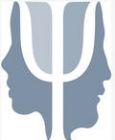Education
Let’s Advance Education as a Learning System
Researchers, practitioners, and policymakers must collaborate.
Posted April 30, 2015
Post by Vivian Tseng, Vice President, Programs at the William T. Grant Foundation. Follow her on Twitter @VivianT88.
In 2006, Professor Paul Cobb of Vanderbilt University approached Michael Sorum—then the chief academic officer of Fort Worth Independent School District—to participate in a study. Sorum declined. His office was inundated with requests from researchers, and he had had too many experiences with researchers who treated districts as objects to be studied—drawing down staff time and resources, without providing findings that could inform the district’s work. But Cobb was persistent and ultimately persuasive. His team did their homework. They knew the district: its goals, challenges, and students. And, they were not in Fort Worth merely to test out their academic theories. They also wanted to learn about the district’s theory of action, its capacities, and its strategies for improving middle school math. Cobb didn’t want to just do research on the district; he wanted to do research with the district.
These conversations spawned the Middle-school Mathematics and the Institutional Setting of Teaching (MIST) partnership. Several times each year, Cobb’s team travels to Fort Worth, Texas. They interview district leaders about their middle school math strategies. Then they collect data on how those strategies are playing out in schools and classrooms. At the end of the school year, they meet with district leaders to discuss what they learned. The district leaders and researchers deliberate over the findings and decide how to adjust the district’s work the following year. Then they repeat the cycle in an ongoing process of continuous improvement.
Sorum reports that the research-practice partnership contributed to a smooth implementation of a new math curriculum and gradual increases in student achievement. It has also had other unexpected benefits. Senior district staff experienced professional growth and fulfillment in jobs that are often tense and challenging. The partnership provided stability to the district as staff turned over. And the partnership helped the district focus on making continuous incremental improvements rather than chasing the next silver bullet.
Learning
Most people would acknowledge that learning is not just about transmitting facts. We eschew the idea that teachers should simply deposit knowledge into the heads of students. Instead, we hope that education will expand students’ understanding of the world and encourage them to discover new ideas and observe how they play out in the world.
Yet when it comes to learning from research evidence, the process is frequently over-simplified. Too often, the problem has been framed as being about dissemination: researchers just need to get their findings into the hands of policymakers and practitioners. But just as children’s learning is not simply a matter of teachers depositing knowledge into students’ heads, adults’ use of research is not merely about researchers transmitting findings to educators. Using research evidence is about learning. It is a process whereby people revise their internal representations of the world in light of new information. Using research is an active and dynamic process. It is influenced by people’s prior experience. It takes place both cognitively within a person, as well as socially through interactions between people.
We need to move from a mindset around dissemination to engagement. Policymakers and practitioners need opportunities to discuss research in order to apply findings. They want to talk with peers that they trust. They also benefit from interacting with researchers. This is not about disseminating research; it’s about dialogue. District leaders will always have questions about how research applies to their local context and needs. Researchers will not always have the answers to those questions, but they can bring their broader knowledge of the research literature to the conversation. Moreover, by engaging with policymakers, researchers learn ways to make their research agendas more policy-relevant.
Building research evidence need not fall only to researchers. The Carnegie Foundation for the Advancement of Teaching has been advocating for an improvement science approach, wherein researchers and practitioners collaborate in building and applying knowledge to improve educational outcomes. Through Plan-Do-Study-Act cycles, the roles of researchers and practitioners become blended. Both contribute to setting hypotheses and testing whether change ideas yield actual improvements.
The partnership between Paul Cobb, Michael Sorum, and their colleagues exemplifies the ways researchers and district leaders can learn together by building and using research evidence. Cobb and his academic colleagues contribute expertise based on social science theories, carefully collected data, and rigorous analyses. The district leaders and educators bring their own theories of action, experience with prior reforms, deep knowledge of their context, and judgments about what is feasible. They learn from each other and from the research evidence they are generating.
A Learning System
A learning system recognizes the interdependencies of different people—teachers, principals, assistant principals, coaches, curriculum and instruction staff, HR staff, research and accountability staff, district leaders—playing varying roles within complex institutions. Systems perspectives help us to see how different parts fit together and to identify where the challenges lie. A learning system is one where the stakeholders can identify shared goals for improvement and test change ideas.
The cornerstone of a learning system is trust among stakeholders. The MIST partnership required that Cobb, Sorum, and their colleagues build trusting relationships. Relationships are key to bridging research, practice, and policy. We often focus on the technical skills required to build and use research evidence. Technical capacity is important for developing rigorous research evidence and for interpreting the findings from studies of varying designs and quality. However, we shouldn’t overlook the social systems in which building and using research are embedded.
Through research-practice partnerships, state and local agencies all around the country are developing long-term relationships with researchers to produce studies that meet the needs of their educational systems. They develop research agendas that fit researchers’ interests and practitioners’ needs. They collaborate to shape specific research projects. Findings are discussed as they emerge. Sometimes those conversations lead to further analyses to understand the problem. Other times they lead to tougher questions about what program, curricular, or professional development changes should be made. The long-term nature of the collaboration allows researchers to hang in there with the district to determine whether reforms lead to improvements in outcomes. Trust among partners enables them to dig deeper into complex challenges.
Designing a learning system will require an infrastructure that supports ongoing, facile engagement between researchers, practitioners, and policymakers around research, data, and experience. Engagement will need to be fostered within agencies—across research and program departments—across actors at varying levels, and in the broader ecosystem including parents and community members. Smart incentive systems, cross-functional agency teams, intermediary organizations, and research-practice partnerships can all be part of that infrastructure.
For federal and state policymakers, a learning education system also requires balance: balancing accountability with room for experimentation, and balancing incentives with capacity-building. Further, the federal government is uniquely positioned to aggregate the lessons learned across states and localities. A lot can be learned from their variation and experimentation. A useful federal role is connecting the lessons learned so that not every locality and state needs to learn lessons anew. The federal government can serve as a hub that accelerates the accumulation of knowledge and spreads it back out.
For the public, a learning education system will require balancing urgency with patience. We see enormous inequalities in our society; and many rightfully look to our educational system to help level the playing field for the next generation. But our system is also complex and cumbersome, and it will take some time to turn the ship. Balancing urgency with patience is not easy. But without patience, we will continue to maintain a system in which the adults are constantly churning. The average urban superintendent lasts less than three years. One in five principals turns over in a year. And forty to fifty percent of teachers leave the profession within their first five years. Such high levels of churn are not a recipe for success in any system, much less one that is supposed to help kids build knowledge from one year to the next.
This post is part of a special series contributed in response to Karen R. Harris’ Division 15 Presidential theme, “Impacting Education Pre-K to Gray.” Her call for collaboration leverages what we know from different viewpoints in order to increase our impact. “When we treat competing viewpoints with thoughtfulness and respect,” she argues, “a powerful repertoire for teaching and learning across the life span can be developed.” A learning system can harness the best of research and practice to support learning for students, as well as the adults.




